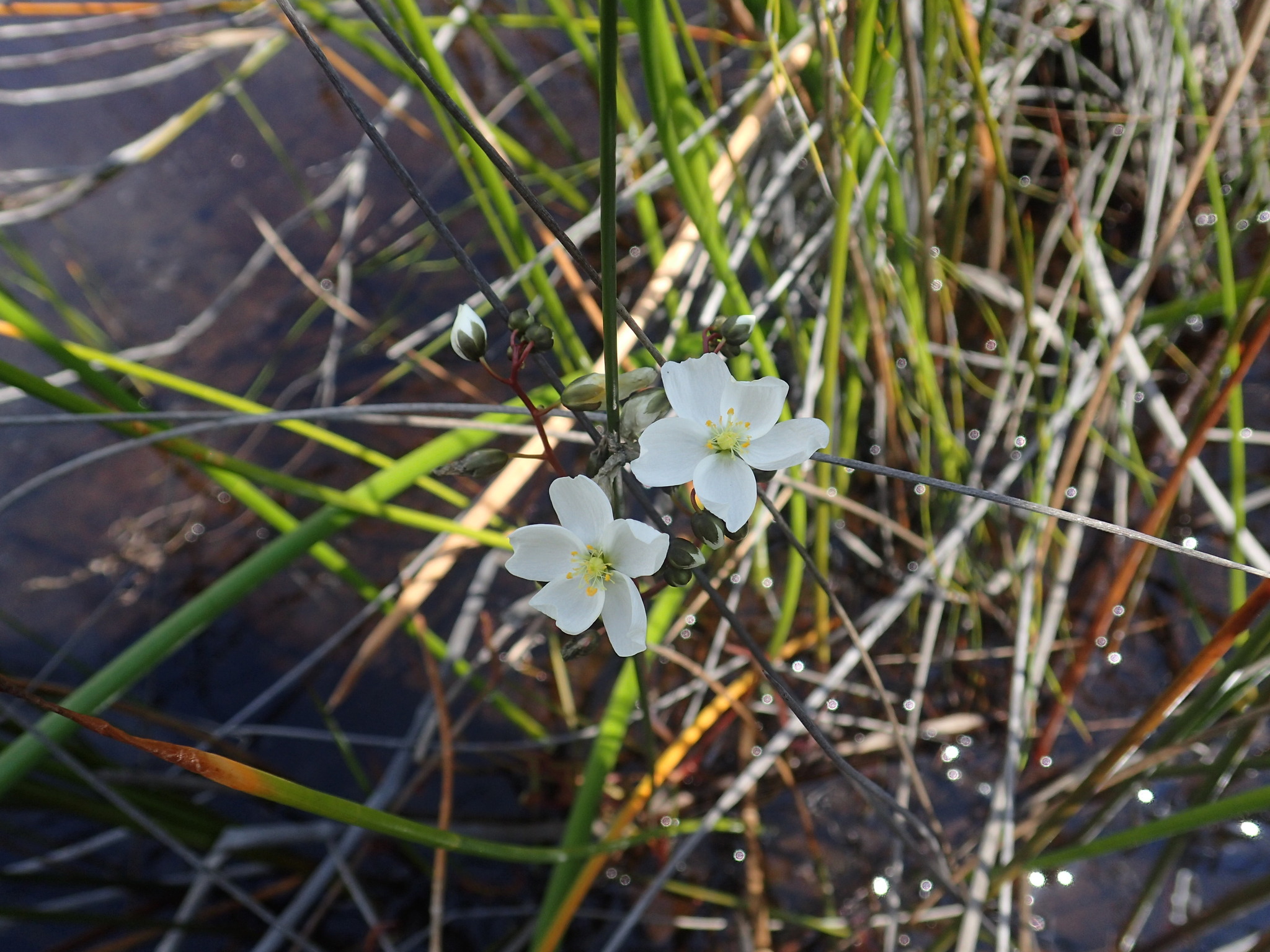
From the Greek droseros—dewy, referring to the shiny and sticky glands on the leaves.
Perennial or annual insectivorous herbs, sometimes climbing or scrambling, roots often rhizomatous. Leaves generally in basal rosettes but sometimes spiralling or appearing to be in whorls, roundish to linear with sticky reddish to green sensitive gland-tipped hairs capable of movement and sometimes ensnaring insects that are gradually digested. Flowers solitary or several in simple or branched cluster, white, pink or purple. Sepals, petals and stamens mostly 5 (petals rarely more). Ovary with 1 chamber; styles 2-5, divided. Fruit a loculicidal capsule.
Australia has a rich flora of Drosera species, and specialists in carnivorous plants stock many species that can be obtained easily and are conveniently divided into several groups: pygmy (miniature plants with dense rosettes and large flowers); rosetted (leaves in rosetted, roots tuberous or not); climbing (stems scrambling by means of the sticky leaf glands); fan-leaved (leaves fan-shaped, 3 species from Western Australia); narrow-leaved (species with erect linear, narrow leaves e.g. D. binata); proliferous (1 species from Queensland that multiplies by propagules from the tip of the flower stalk); and membranous-leaved (leaves thin e.g. D. adelae). Only the more commonly cultivated species are described below. As the range of species grown is large and variable a key is not presented. Some species have propagules on the leaves.
Seed, division or rhizome cuttings, some from leaf and stem cuttings.
About 100 species, cosmopolitan but mostly southern hemisphere (Australia has about 60 species, most of these in SW Australia).
Lowrie (1987, 1989).
Source: (1997). Droseraceae. In: . Horticultural Flora of South-eastern Australia. Volume 2. Flowering plants. Dicotyledons. Part 1. The identification of garden and cultivated plants. University of New South Wales Press.
